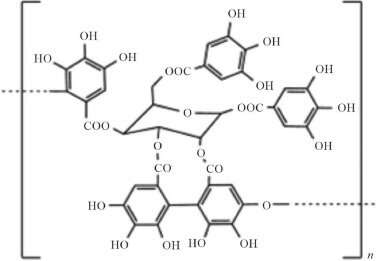Discover the remarkable revival of chestnut tannin, a compound extracted from chestnut trees, and its expanding role in the bioeconomy. This review explores the compound’s diverse applications, from traditional leather tanning to emerging uses in animal nutrition, agriculture, and beyond. Bioeconomy and tannin enthusiasts alike will find this a captivating read.

Reviving the Power of Chestnut Tannin
The bioeconomy is witnessing a resurgence of interest in chestnut tannin, a compound extracted from the bark or wood of chestnut trees. Thanks to its versatile applications and eco-friendly nature, chestnut tannin is poised to play a significant role in the future of sustainable industries.
Historically, chestnut tannin has been valued for its excellent binding capabilities and resistance to microbial degradation, making it a preferred choice for producing luxury leathers. However, the rise of synthetic alternatives led to a decline in demand for this natural compound. Now, researchers are exploring new and innovative applications, opening up exciting possibilities in animal nutrition, agriculture, and beyond.
Extracting and Refining Chestnut Tannin’s Potential
The review outlines the process of extracting chestnut tannin, which has seen significant technological advancements in recent years. Counter-extraction and membrane-based nanofiltration techniques have improved the quality and purity of the extracted tannin, contributing to its high price and positioning in the market.
These innovations have not only enhanced the compound’s commercial viability but also highlighted its remarkable biological activity. Chestnut tannin’s ortho-phenolic groups are responsible for its ability to inhibit extracellular hydrolytic enzymes and bind metal ions, making it a potent bioresource with a wide range of applications.
Unlocking New Frontiers in the Bioeconomy
The modern research landscape has opened up new avenues for chestnut tannin, with studies showcasing its potential in animal feed as a replacement for antibiotics and in agriculture as a biostimulant and biofertilizer. The compound’s versatility is a testament to its growing importance in the bioeconomy.
Economically, the chestnut tannin market is experiencing significant growth, with new extraction plants being established to meet the increasing demand. The global production is primarily concentrated in Europe, with countries like Italy, Slovenia, France, Portugal, and Spain leading the charge.
As research continues to uncover the full capabilities of chestnut tannin, it is poised to become a key player in the bioeconomy, contributing to sustainable solutions across various sectors. The future looks bright for this natural wonder, as it navigates the path towards mainstream adoption and integration into the circular economy.
